Last Updated on June 21, 2024
This post contains affiliate links.
I once had dinner with two French scientists who were working in the United States. I asked them what people in France thought of Americans, and one of them replied that the stereotype was of people who ate hamburgers and French fries. (Yes, the French associate French fries with Americans, not themselves.)
They have a point. Burgers and fries are as American as any food: if you don’t believe me, look at any business district and count how many restaurants serve burgers as either part of the menu or as the main part of the menu. From fast food to upscale dining, it’s not hard to find a burger in the United States if you want one.
Virtually every grocery store sells burgers. Most grocers use local brands or sell burgers under a store brand. You can often find them in one of two places: either in the fresh meat section, pressed into ground beef patties, or in the frozen section. While your average purist probably would say that fresh burgers trump frozen ones, as a burger fan I like both of them. And as a cook, I find frozen burgers to be a little easier to cook over the grill because they hold together better, although I’ve worked with both.
Aldi sells both fresh meat patties and frozen burgers. The frozen patties come in a few different varieties, but two of the most visible are the simply named “Beef Burgers,” which come in resealable plastic pouches.
Beef Burgers are an Aldi Regular Buy, which means you can find them in stores all the time. Aldi sells two different versions: a 75% lean / 25% fat version in an orange label bag, and an 85% lean / 15% fat burger in a blue label bag. The orange label bag currently costs $8.69, while the blue label bag costs $10.49. Both are 48 ounces (3 pounds), so the orange label bag comes out to 18 cents an ounce, while the blue label bag comes out to 22 cents an ounce.
There is also a nutritional difference between the two burger types. The orange label is higher in fat and calories, while the blue label is a little higher in protein. Both bags list just one ingredient — beef — and point out that they’re “minimally processed” and contain “no artificial ingredients.”
A Brief Note About Sourcing
My bags both listed the establishment number as 18076 and the beef as a product of the United States. According to the USDA, that establishment number refers to Green Bay Dressed Beef out of Green Bay, Wisconsin. Green Bay Dressed Beef is a subsidiary of American Food Group, which in turn is a division of Rosen’s Diversified, a holding company specializing in beef processing. According to Forbes, Rosen’s Diversified is one of the largest privately held companies in America.
I don’t know how Green Bay Dressed Beef runs its operations. My guess, though, is that this isn’t a free range operation. If things like pasture-raised beef are important to you, these may not be the burgers you want. Of course, if grass-fed beef is important to you, you probably aren’t going with a store-labeled bag of beef.
Cooking and Eating
I sometimes have some trouble pulling the burgers apart, especially after they’ve been in the freezer for a while. I end up gently and carefully prying them apart with a butter knife. Each burger has a paper lining to help keep patties from being melded together, and the paper is usually pretty easy to remove.
Both the orange and blue bags come with similar cooking instructions for skillet, grill, and broiler. Skillet and grill instructions both call for cooking the burgers on a preheated grill or skillet until juices come through, then flip the burgers until done. The broiler instructions, meanwhile, call for broiling the burger until brown, then flipping the burger and cooking until done.
In all cases, the instructions advise cooking to an internal temperature of 165 degrees Fahrenheit. While experienced cooks will have an idea when the burger is done, I prefer using an instant-read thermometer myself. It takes some of the guesswork out of making sure the burger is safe to eat without being overcooked. Your mileage may vary, but both the orange label and blue label burgers took me 10-12 minutes to cook through on a medium-high propane grill.
Not surprisingly, the higher-fat orange label burgers flared up more than the blue label ones.

My grill (at night) after removing the burgers. The orange label burgers cooked on the left, while the blue ones cooked on the right. It’s not hard to see which one caused the bigger grease fire.
Our family tried both burgers side by side. A majority of testers preferred the blue label burgers, which they said had a richer, less fatty flavor. One of our testers preferred the orange label. That all said, everyone agreed that the difference in taste between the two wasn’t huge, and that both burgers were good, especially when topped with condiments.
Our family members aren’t the only one who likes these. I’ve served these burgers — the blue label, in particular — to visitors in the past, and they’ve always been a hit. One of the more memorable examples came from a friend of my wife’s, who said she really liked the burgers … and she’s a farmer’s daughter.
The Verdict:
Aldi Beef Burgers are a reliable choice for cookouts when you need burgers. They’re reasonably priced, easy to cook, and taste great. The blue label bag is the more expensive of the two, but it’s also lower in calories and fat and is more popular with our family. The orange label bag is less expensive and has a taste not far off the pace of the blue label, but it’s higher in calories and fat. For my money, I’d go with the blue label in most cases.

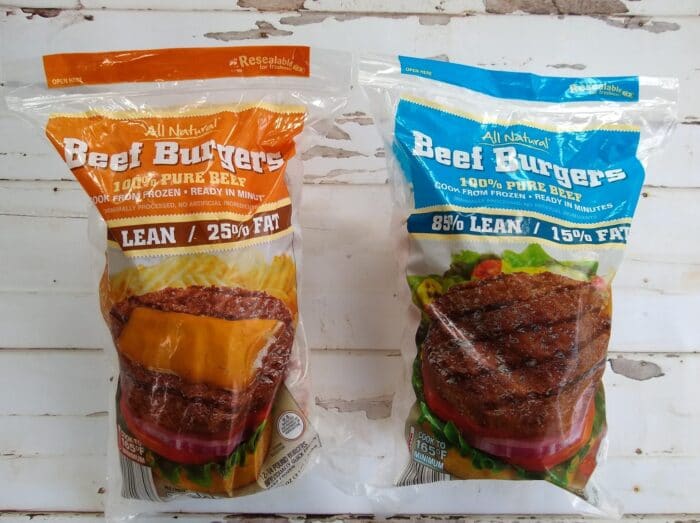
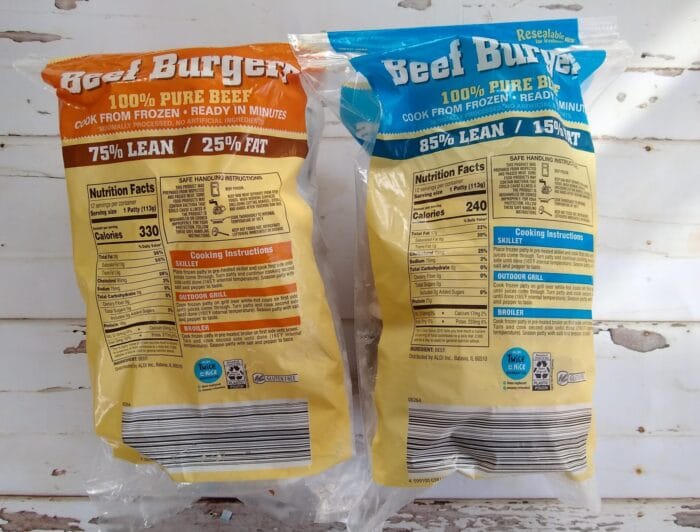
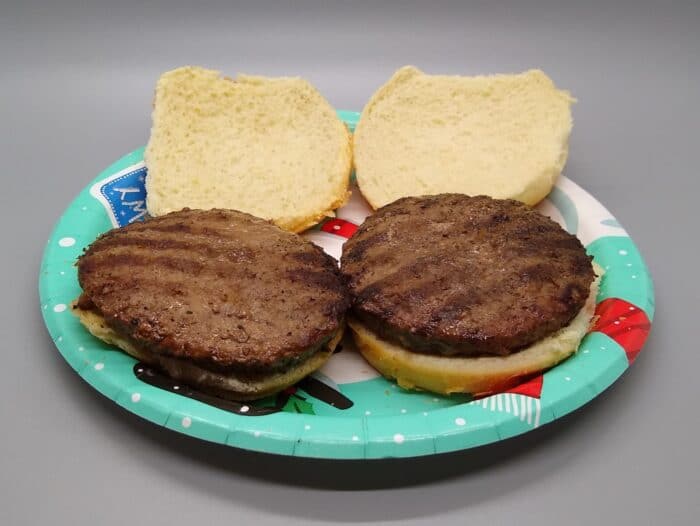
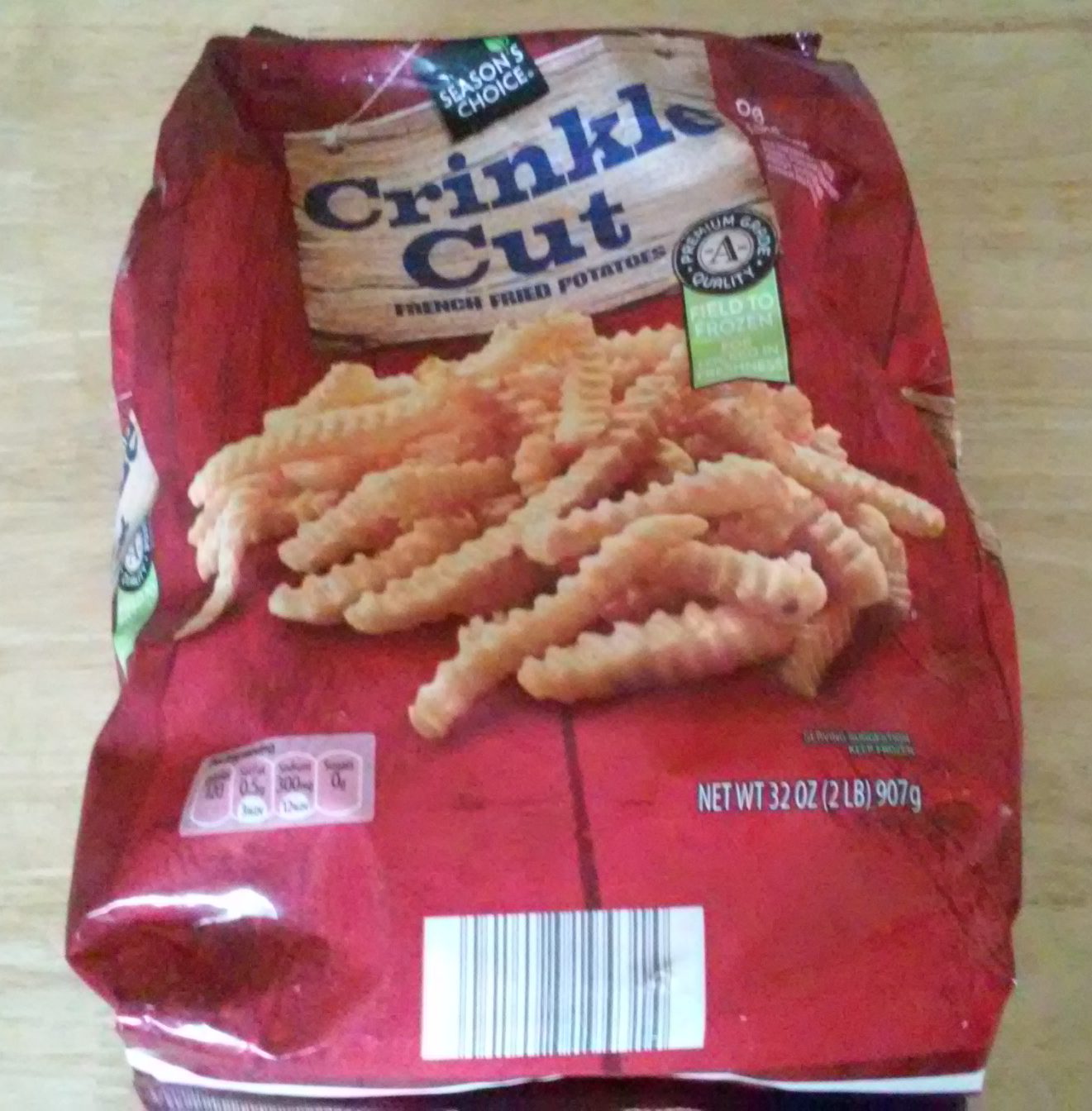
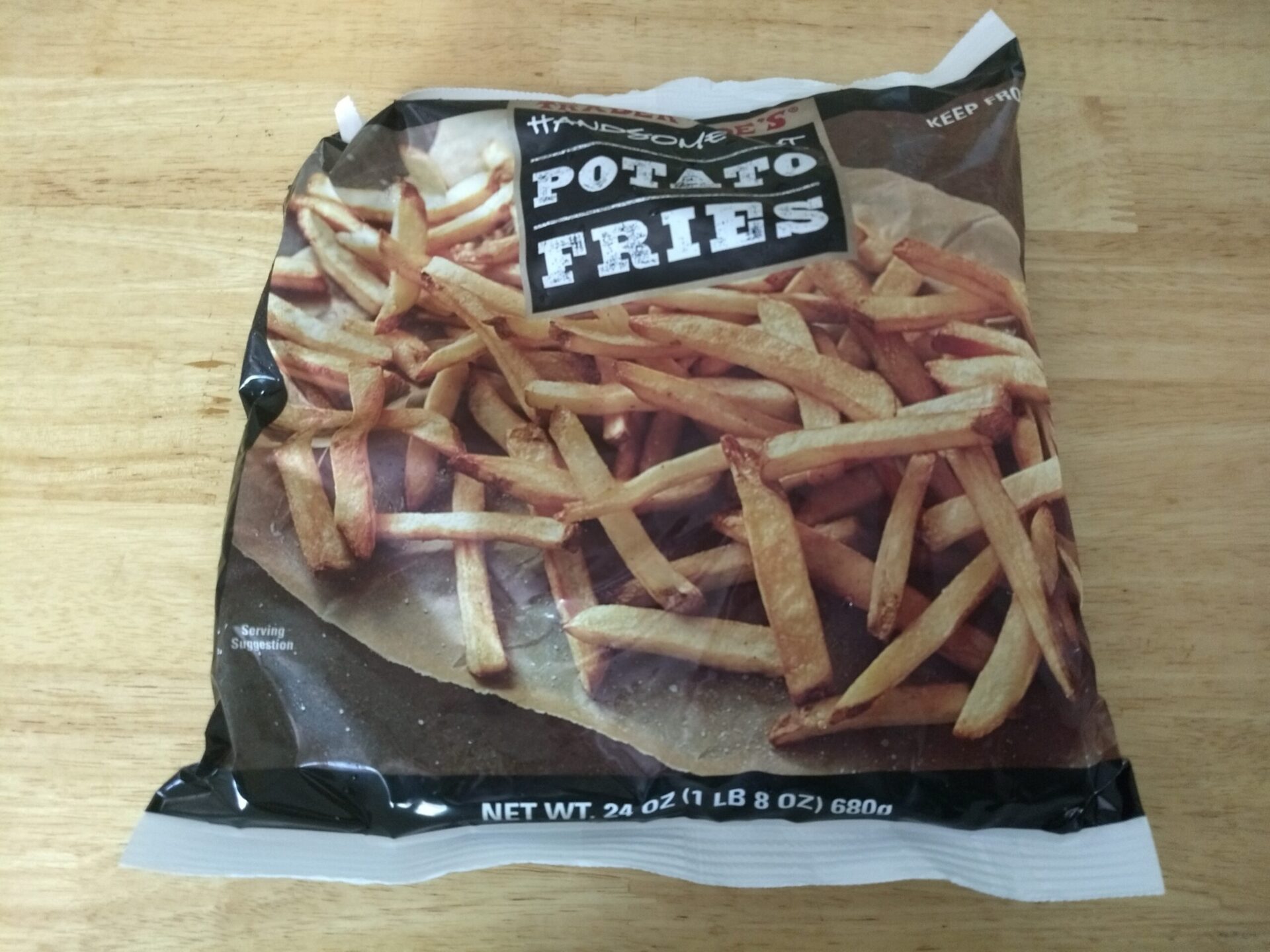
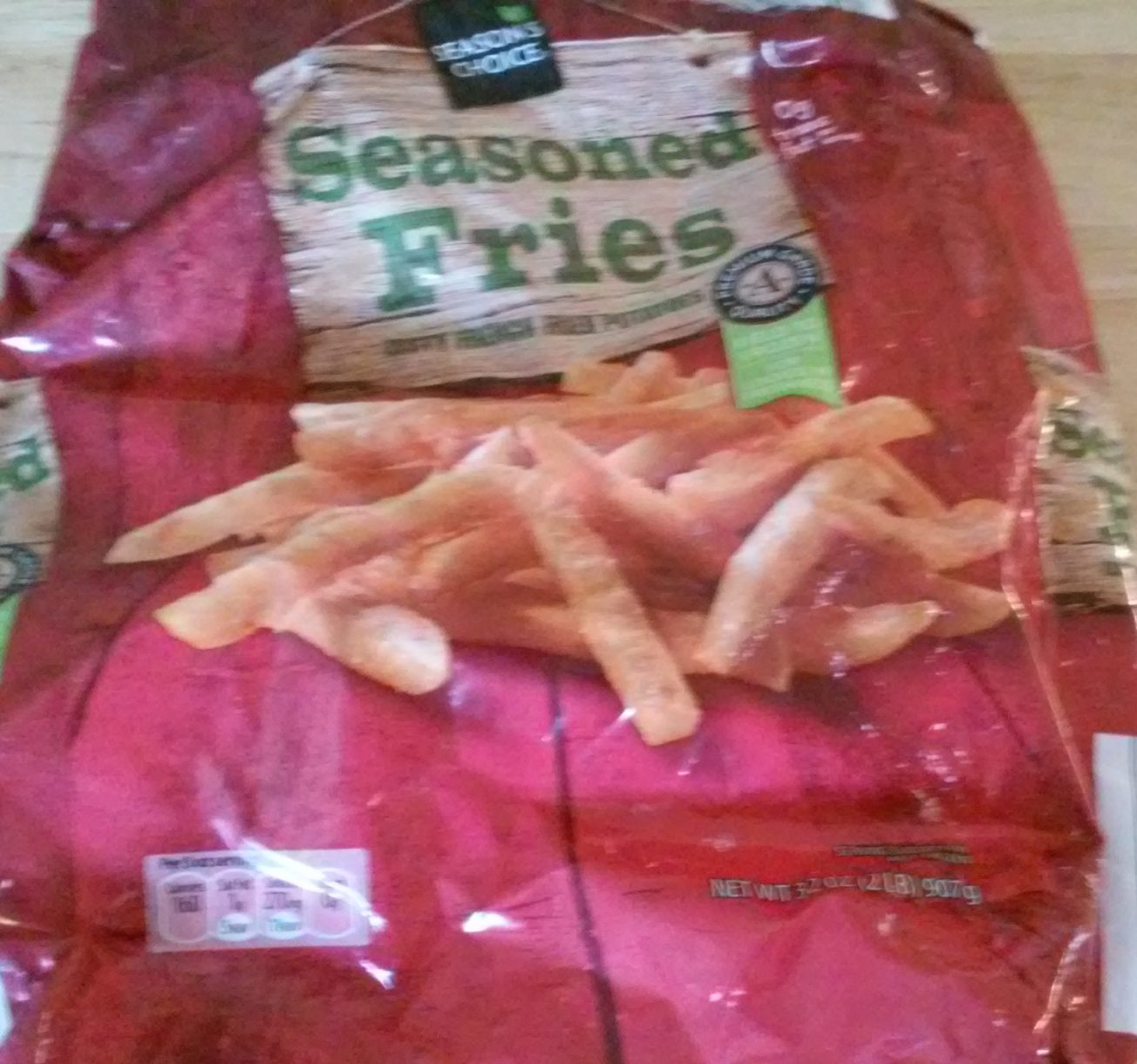
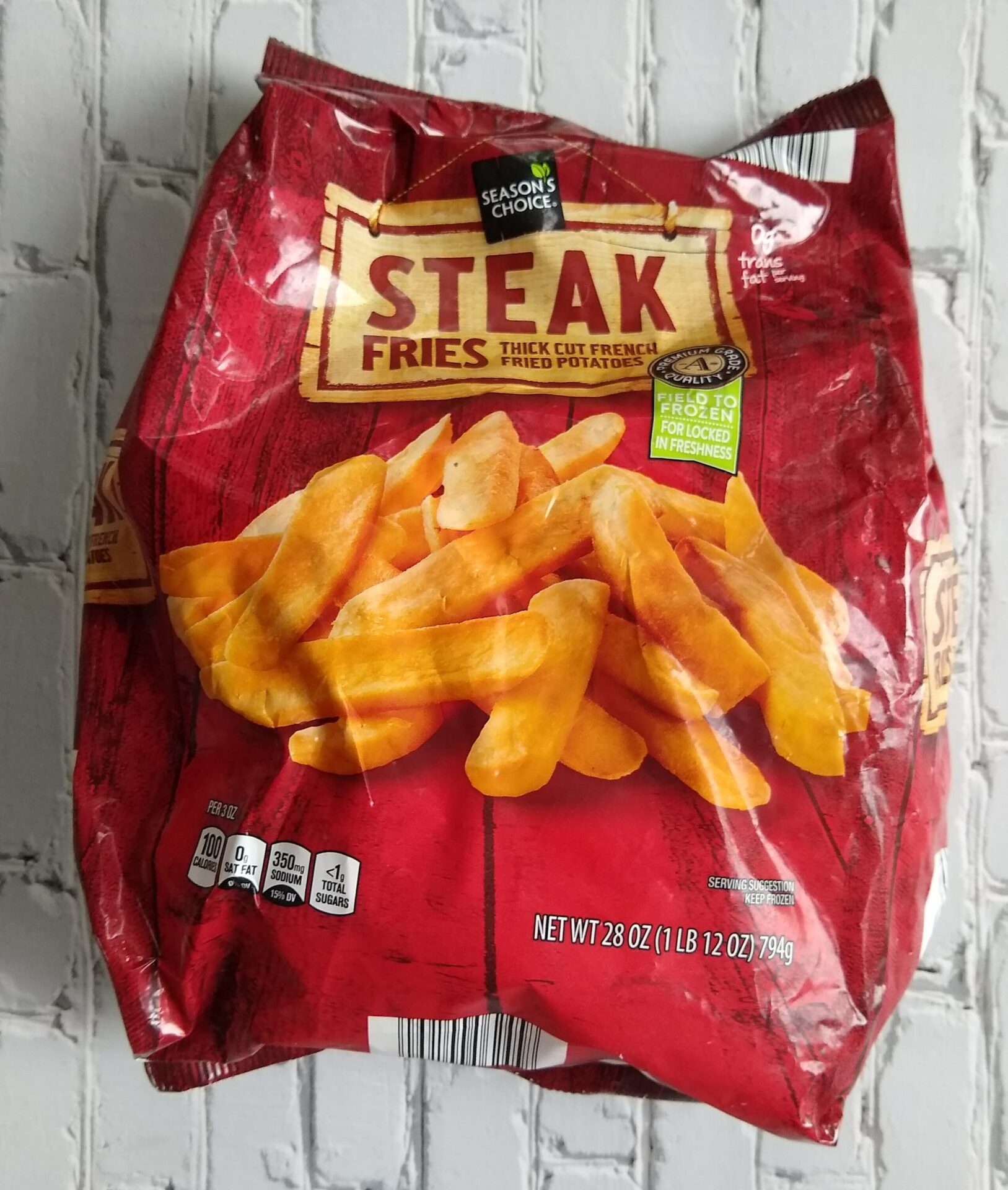
As frozen burgers go, these are fine. They do freeze together — and they do not have paper separators, at least in our territory (Ohio). I’m glad they don’t, they would probably only make it worse.
A lady was getting them, I asked if she likes them, I am definitely an Aldi’s girl for sure. So I grab a bag, only for convenience. Tried the blue bag and to me they were tasteless, had to slather mayo and cheese to get it down. I have YET to find a convenience Pre-package cooked burgers taste decent. I must admit I’m a cook and don’t buy a lot of already pre-pared package meals. How ever, in a pinch for a quick lunch or dinner I’m willing to try. She bought the brioche buns, which to me are an over-price bread item at Aldi’s. Aldi’s prices are definitely going up and I’m seeking an alternative store now
Unfortunately, prices are going up everywhere right now, including Aldi. I’ve found that any alternatives out there all have the same price issues. You might find cheaper prices elsewhere, but I wouldn’t count on it.
If I was presented with a burger “slathered down with Mayo” (much as I love Mayo) it would end in the trash. Ketchup, onions, relish for me thank you.
85/15 is always my go-to when buying ground beef. For me as our family cook, it has always seemed to be the best ratio for minimal burger shrinkage or grill flare-ups, and just enough to keep the meat from drying out. I regularly buy these from Aldi, or WalMart’s version depending on where I’m shopping. I usually prep them with French’s worcestershire sauce and garlic powder – yum!
Aldis brioche buns are more expensive than the .89 loven fresh rolls but definitely not overpriced and definitely delicious.
I do like the orange bag. More flare ups on the grill, but I want fat in a burger. Fat keeps them juicy and flavorful.
Where on the package did you see the “product of USA” written? I searched all over it in the store and didn’t see it.